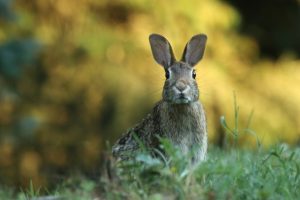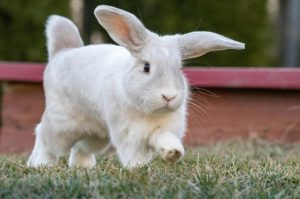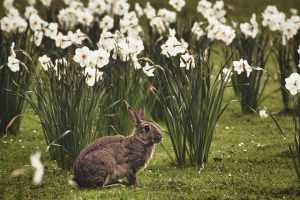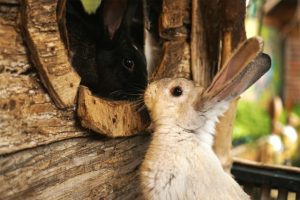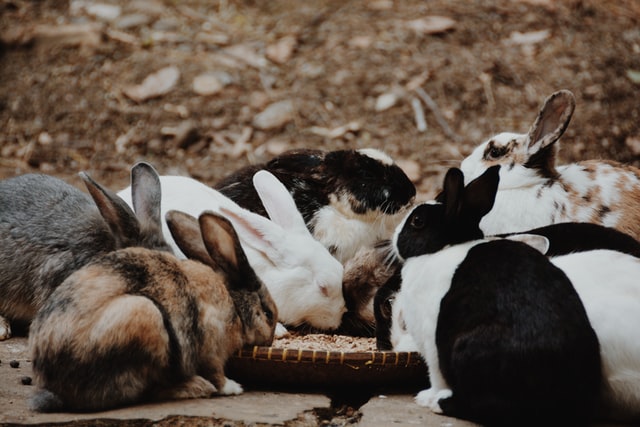
Known as the Clown of the Rabbits, the Harlequin Rabbit is known for its colors. This gorgeous rabbit is one of the oldest breeds around. First developed in the late 1800’s, they are known for the mix of colors and markings in their coats. The Harlequin Rabbit is most often bred to be a show animal, however, they are becoming more popular as companions for people.
Recognized as a breed by the British Rabbit Council and also by the American Rabbit Breeders Association, there are many people who still believe the Harlequin is known by its colors alone, and that is why it has the name. There are two types of Harlequin Rabbits, the Magpie and also the Japanese. These rabbits are friendly and calm animals, very docile. This is what makes them such a great companion. They are also considered to be great playmates for children.
Contents
History
The Harlequin, known for the colors, was developed by breeding the Tortoiseshell Dutch rabbit, considered to be semi-wild, with an actual wild rabbit. They were first shown in 1887, in France and were soon exported to England after that. First known as the Japanese Rabbit, when the Second World War took place, it obtained the current name of Harlequin. They were inducted into the ARBA in 1914, and have become a staple in show competitions ever since.
Characteristics
As mentioned, the coat coloring makes these rabbits stand out above the others. Due to their sweet nature, and of course, the cute appearance, these rabbits have become a very common companion of choice. If these rabbits are of show-type appearance, they would be more expensive than many other breeds. A normal litter size is between 5 and 6 kits per litter. The expense to purchase one of this breed can be expensive compared to other breeds, this is likely due to the coloring.
Appearance and Size
The Harlequin Rabbit will grow to be between 6.5 to 10 pounds, with the males on the low side. The body of this rabbit is considered to be a commercial body. The head is round shaped. Their ears stand erect and are of medium or average size. According to ARBA and the British Rabbit Council, the Harlequin is considered to be on the medium to large scale.
Their coats are dense, but short fur. However, the fur is very soft. Even as popular as this rabbit is because of the coat, they do not need to much in the way of supplemental grooming. Brushing your Harlequin once a week is good, they manage to keep themselves clean and well groomed. During molting times, you will want to give an extra brushing or three. This helps with the hair that falls out.
Temperament
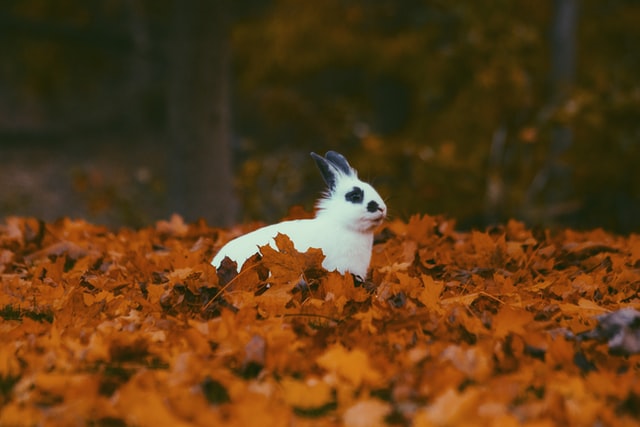
The Harlequin Rabbit is a very outgoing rabbit, he loves to explore. They are accustomed to being by themself, being independent. You will often see them sniffing out the location they are in, getting to know their surroundings. The Harlequin avoids conflict from or with other animals, therefore it is wiser to keep the Harlequin in a home with just other rabbits, one that has no other pets such as cats and dogs.
These guys are quite curious and would do well exploring with supervision of course. Do not misunderstand, these little fellas love to be pet, they like affection, and love attention from their human family. They are very laid back and gentle creatures.
One thing to be warned of is to honor the personal space you Harlequin has. If they get scared or frightened, they may bite. In other words, if you are planning to walk to the hutch of your sleeping pal, you should begin saying his or her name before reaching the hutch. This will allow them to wake up and not be startled.
Health and Other Issues
Like many other breeds of rabbits, the Harlequin does have a predisposition to some known diseases and other ailments. Most of these issues pertain to all rabbits, not just the Harlequin.
- Ear Mites: These are a common parasite in all rabbits. When you see your Harlequin or any other breed shaking their head quite a bit, it is likely that they have ended up with ear mites. Your veterinarian will be able to treat the mites and get your rabbit right back to health.
- Malocclusion: When a rabbit does not have properly aligned teeth, the uppers and the lowers, this will cause the issue where your rabbit’s teeth are not being worn down as needed. As they eat good quality hay, the gnawing action of eating the hay helps to keep the teeth ground to a good level. Even your rabbit needs regular Dental checkups. These are highly important for the health of your rabbits and dealing with malocclusion.
- GI Stasis: This is a condition where the digestive tract slows down the processing of digestion. Sometimes, the digestion stops altogether. The signs to watch for will include lack of appetite, small or very few fecal pellets left and lethargy. If caught quickly, the veterinarian will be able to treat this issue. If not caught quickly, the problem could result in death.
- Back Issues: If the rabbit is mishandled, picked up wrong or even dropped, they will sustain back issues. Again, routine examinations from a qualified veterinarian will help to prevent issues from developing any further.
Diet and Daily Life
Your rabbit needs a good diet, just like their humans. You will need to supply your rabbit with a good quality hay, such as Timothy. The amount of hay they should get each day is equivalent to their body size. They should also be given rabbit food pellets and fresh vegetables. A lot of the amount will depend on how big your rabbit is, how much activity they get daily and also their age. At least ¾ or 70% of the diet should be good quality hay.
Your rabbit should have fresh water all throughout the day also. The hay wears the teeth down and keeps the digestive tract functioning. The pellets that you feed your rabbit should only be given as a supplemental food. These, too, should be high quality and will give the rabbit added nutrition, minerals and extra vitamins.
Exercise
When a rabbit is in the wild, they will run approximately two to three miles a day. This is born into them to be active. They will need an area with room to roam and where they can jump and run if and when they want. I believe that if you can build the hutch next to a rabbit run, similar to a dog run, with a roof to protect it. The Harlequin will get plenty of exercise. The roof is needed as rabbits are seen as prey to many other animals. The roof will keep them safe so they can run for cover when they sense trouble.
The exercise they get in the run will help to keep them at a healthy weight, it will also help keep their limbs and joints moving easily and it will also serve as entertainment for your rabbit. Within their area, you should be sure to place things that they can jump over, climb on or go through. This will keep them agile and areas where they can dig and chew on stuff. A few extra rabbit toys would be helpful as entertainment.
Your rabbit needs to be able to exercise for at least three hours a day. This could also be indoors, if that is where your rabbit lives all the time. Obviously, you will need to supervise your bunny so that he or she does not get stuck in a tight spot.
Training
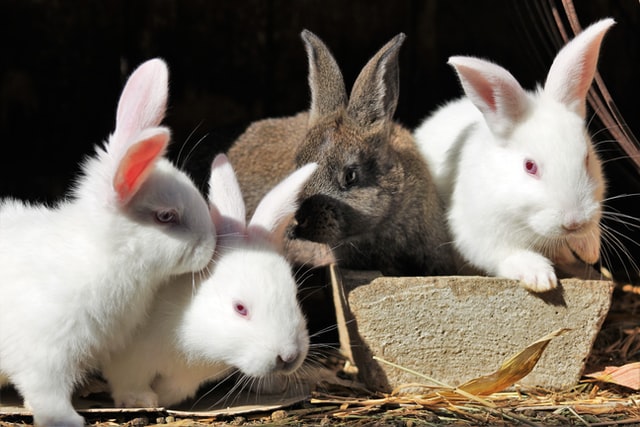
The Harlequin is a very happy and gentle rabbit. They are friendly and love to be loved by their humans. Besides being so docile, they are also very intelligent. The Harlequin could be trained to come when it hears their name, some rabbits have been successfully trained to use a litter box. This will be less of a mess for the human to clean up, especially if this rabbit is kept as an indoor rabbit for companionship.
Your Harlequin can be happy indoors or outdoors. If they are outdoors, just be sure that the hutch has a sheltered area where they can get to for sleep or if they sense danger. As a larger rabbit, many owners choose to have the warm and secure hutch outdoors. It is highly recommended that the floor of the hutch does not have chicken wire or other wire that could possibly cause injuries to the paws of your Harlequin or other rabbit.
The only difference between the Japanese and the Magpie is that the Magpie colors will be orange, black, brown or a variety of colors. The Harlequin will have white mixed in with the other colors. If you are considering a rabbit as a first time pet, the Harlequin would be one of the good choices.


